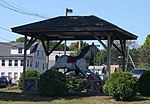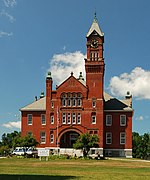Blueberry Island (Massachusetts)
Islands of Worcester County, MassachusettsPopulated places in Worcester County, MassachusettsWorcester County, Massachusetts geography stubs
Blueberry Island is an inhabited island in Worcester County, Massachusetts. It is surrounded by Lake Monomonac, an artificial lake that straddles the border between Rindge, New Hampshire, and Winchendon, Massachusetts.
Excerpt from the Wikipedia article Blueberry Island (Massachusetts) (License: CC BY-SA 3.0, Authors).Blueberry Island (Massachusetts)
Island Road,
Geographical coordinates (GPS) Address Nearby Places Show on map
Geographical coordinates (GPS)
| Latitude | Longitude |
|---|---|
| N 42.711 ° | E -72.007 ° |
Address
Island Road 56
03461
Massachusetts, United States
Open on Google Maps







